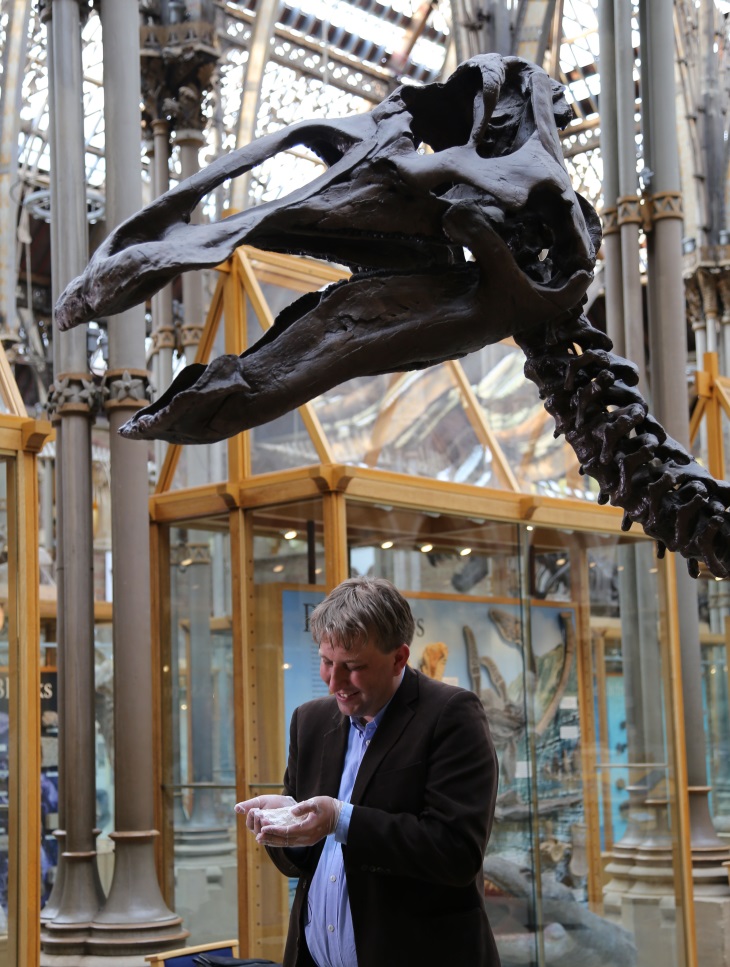
We’ve had a visitor all the way from the Moon! Dr Sarah Russell from the Natural History Museum brought a slice of lunar meteorite with her when she came to be a guest on the BBC’s The Sky at Night television programme. A whole episode was filmed here in the Museum last week.
Meteorites are rocks from space that have fallen to Earth and, in fact, it was a meteorite hitting the Earth that created the Moon!

In the programme, presenters Dr Maggie Aderin-Pocock and Dr Chris Lintott will be showing some of the meteorites in our collection.
One of these arrived at Amalia Farm in Gibeon, Namibia, in 1836, and the other landed at Chandakapur, India, in 1838. Both had travelled from the asteroid belt, a band of planetary debris orbiting between Mars and Jupiter.
We now believe that the dinosaurs became extinct after a massive meteorite collided with the Earth. It brought with it a lot more of the element iridium than would naturally occur on Earth. You’ll be able to see our sample of the iridium-rich clay rock that formed at the bottom of the sea, hundreds of miles away from the giant impact crater.


This episode of The Sky at Night has a lot about impacts – not just meteorite landings. It will be screened on BBC4 at 10pm on Sunday 8 June, and repeated on Thursday 12 June at 7.30pm. Don’t miss it!
Monica Price, Head of Earth Collections


Published by